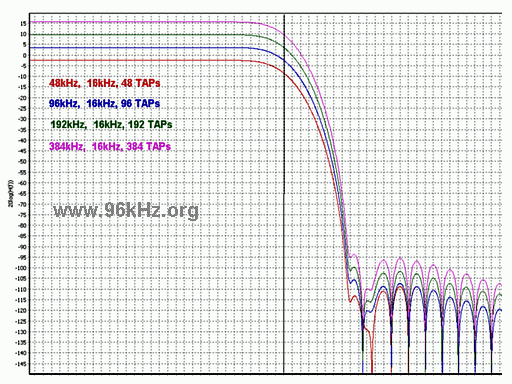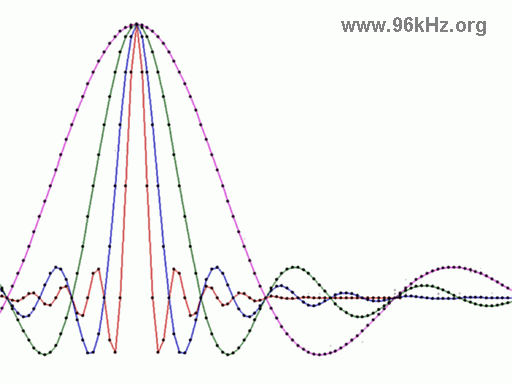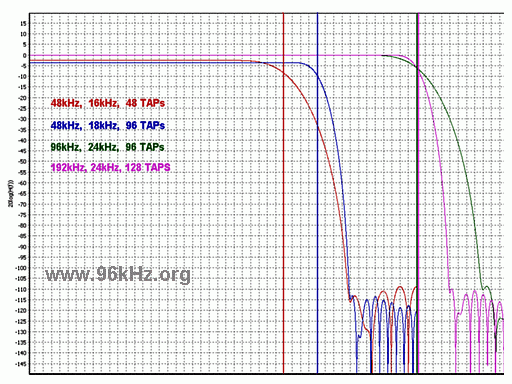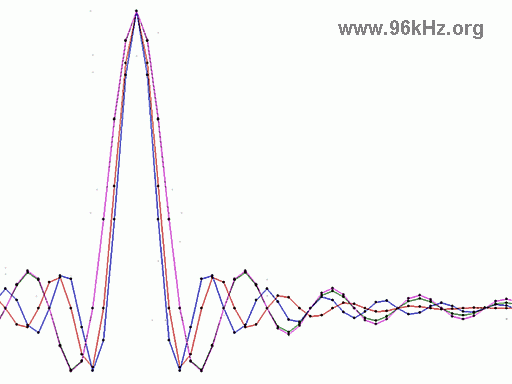| 96 kHz.org |
| Advanced Audio Recording |
|
Comparison between 48kHz,96kHz,192kHz and 384kHz sample frequency In recent years higher sample rates like 96kHz and more are used for modern audio recording. This article shows some technical background, why this is the case. Please also read the article: Advantage of 96kHz. The advantage of higher sampling frequencies From the theory the current 48kHz frequency seems to be sufficient since it can represent up to 24kHz which is the half of the sample rate and meets the so called nyquist's criteria. Using an appropriate reconstruction filter, all frequencies below this border might be correctly restored. Practically this required an ideal anti aliasing filter which does not exist and cannot be constructed neither in analog nor in digital domains. This leads to the conclusion that some headroom is necessary to reduce the amount of frequencies close to nyquist's frequency to avoid the negative impact of mirror frequencies. Please see this article of the comparison 48kHz/96kHz for details and a general discussion. Here I like to extend the comparison to 384kHz which is currently the highest known frequency for audio signal representation. To understand the impact on the sound quality a closer look at the filtering techniques is useful.
In digital domain, filters are often realized by FIR filters which strongly vary in complexity and size and therefore demand more or less calculation power. The subsequent image shows 4 different versions of audio filters (high cut) and their edge frequency for the selected sampling frequency between 48kHz and 384kHz:
As the image shows, the deviation in the stop band and pass band as well as the steepness itself depend on the number of the TAPs of the used filter. The more TAPs the more accuracy can be expected from the filter. It also becomes clear that the usage of higher sample rates require a larger number of TAPs already to cover that same spectrum.
With a higher frequency and increased number of TAPs relatively more number of dots are available to define the ideal filter curve given by the theoretical equations. The more "dots" the higher the precision.
Higher frequencies make it possible to operate with different edge frequencies and though obtain a better separation of the stop band and the pass band the same time.
|
| © 2004 J.S. |



